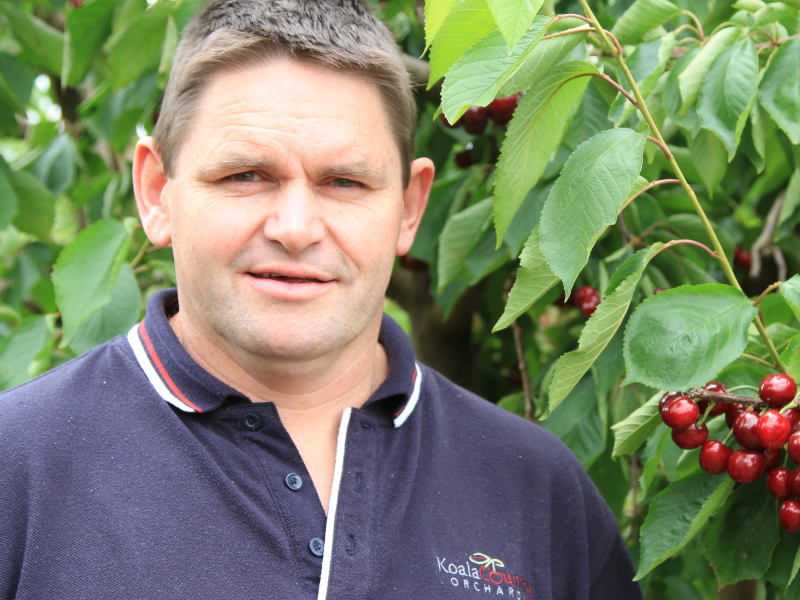
This investment is helping cherry growers implement an effective on-farm biosecurity plan, complete with a regularly updated biosecurity manual. These are vital to ensure export success and market expansion.
The challenge
Identify the cherry industry’s highest priority pests and tailor specific plans to effectively manage them should they make it to Australia.
Meet Mick
Cherry grower Mick Rouget is part owner of Koala Cherries, located in Central Victoria. He’s thankful for the biosecurity support backed through this program, particularly the manual, which he reckons is a helpful tool for trade and market access.
“Specifically for us, it’s pest monitoring and control that’s really helpful,” says Mick. “We registered our properties for export to specific countries, and that involves mapping the property and then installing a certain number of traps to monitor for the presence of Queensland fruit fly and other pests of concern, like coddling moth”.
While these pests are common in Australia, many overseas markets simply won’t take produce that could potentially be harbouring the bugs. The monitoring and trapping taking place under this program assures overseas customers that our cherries don’t pose that kind of biosecurity risk.
“Once the fruit comes to the packing shed, there’s a protocol for each country, and we understand the specifics of packing for that country.”
“On the inspection side of things, a certain number of pieces of fruit per consignment are inspected, initially by sorting by staff and then the QC staff inspect the packed boxes,” says Mick.
The approach
Thanks to this program, cutting-edge research is underway into the various biological threats facing Australian cherries and mitigating any negative effects on exports. This important data feeds into the industry’s Biosecurity Plan and Farm Biosecurity manual, ensuring growers are always up to date when it comes to the identification and categorisation of exotic pests, risk mitigation, and contingency plans.
The manual gives growers invaluable advice, while encouraging practices that make them more aware of biosecurity threats, promotes farm cleanliness and sanitation, makes compliance easier, and emphasises the need to report anything unusual.
All high priority pests are dealt with under this program, but the latest manual devotes special attention and assigns a higher risk ranking to certain species due to their ability to get into Australia. These include the brown marmorated stink bug, spotted wing drosophila, and Xylella fastidiosa.
These three pests have demonstrated their ability to cross international borders and are increasingly showing up in Australia-bound cargo inspections.
It’s important for growers to recognise these pests so they can remain vigilant, preventing their introduction and spread on farms
The impact
This program and its various measures and mitigation strategies have proved an effective mechanism for the cherry industry, government, and other relevant stakeholders to constantly assess potential problems and develop effective solutions.
The manuals produced so far have enabled growers to implement the latest biosecurity measures where they matter most – on their farms. Presented in a user-friendly and practical way, the manuals contain fact sheets to identify high priority pests, tips on crop management, how to manage people, along with vehicles and equipment to minimise biosecurity risks. They also contain a biosecurity self-assessment list, and templates to record pest surveillance records and visitors.
Thanks to this program Australian cherry growers are at the forefront of best practice when it comes to tackling biological threats, fortifying the reputation of Australian cherries around the world.
